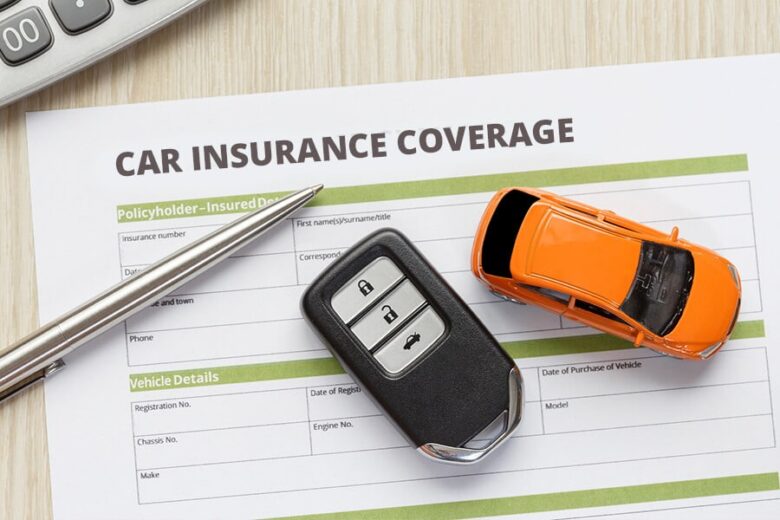Car insurance protects against financial loss when an accident happens. Most states mandate car insurance as mandatory coverage; additional coverages can further enhance protection.
Basic coverages include liability and comprehensive policies. Liability covers damage you cause to others while comprehensive provides protection from non-accident events like theft, natural disasters and animal contact; many policies also include deductible payments.
Collision Coverage
When purchasing auto insurance, collision coverage is often recommended as a necessary precautionary measure. But does this coverage truly shield against large financial costs if an accident damages your own vehicle? That depends.
Collision coverage covers repairs for vehicles involved in traffic accidents with other vehicles or objects like mailboxes or fences, as well as damages resulting from something occurring while driving–such as rollover or sudden turn–but doesn’t extend coverage if one-vehicle accidents such as hitting potholes or backing into street signs occur.
Liability coverage typically does not impose limits, offering instead to pay out the actual cash value (minus your deductible). But remember, choosing higher deductibles will result in lower monthly premiums.
Even though many drivers choose comprehensive only coverage to save money, keep in mind that state minimum requirements don’t fully cover the cost of a serious accident. Without collision coverage you would be responsible for repair or replacement costs out of your own pocket which could quickly add up. Leasing or financing your car makes collision coverage especially important and should be included.
Comprehensive Coverage
Comprehensive (other-than-collision) insurance provides an essential safety net against circumstances beyond your control, such as theft, natural disasters, falling objects and animal attacks on your car. Comprehensive policies typically cover damage incurred due to theft, natural disasters, falling objects or contact with animals causing damages that cannot be covered under collision policies.
Comprehensive and collision coverage are often sold together to simplify policies, ensure comprehensive coverage is uninterrupted, and meet lender requirements for leasing or financing your vehicle.
Your comprehensive insurance deductible amount is generally customizable, meaning the out-of-pocket amount you are required to pay before your insurer begins covering a claim. When selecting your deductible amount, be sure that it fits comfortably within your budget and ensures peace of mind in case of loss.
Understanding the various types of auto insurance coverage and evaluating your personal risk factors will enable you to select a comprehensive auto policy that is tailor-made to your needs and driving environment. Examine driving environment and habits, vehicle value and coverage limits before selecting one that can protect your car with confidence.
Bodily Injury Liability
Bodily Injury Liability insurance, more commonly referred to as BI coverage, protects both you and your household members who live under your roof as well as anyone who drives with permission using your car from potential economic losses caused by an accident that you were at fault for. Bodily Injury Liability coverage is required in all states except New Hampshire and Virginia and covers injuries that happen while you’re driving your vehicle.
Property Damage Liability insurance, commonly referred to as “PD”, is required in nearly all states and pays for damage you cause when at fault in an accident; however, this doesn’t cover repairs to your own vehicle or expenses such as medical costs or lost wages.
Your policy’s limits determine how much your insurer will pay out should you need to file a claim under this coverage. You have two choices when selecting limits: split (two numbers) or combined single limit – for instance you could choose $100,000 per injured party and $300,000. To protect assets that you wish to keep safe consider choosing higher limits than what your state requires.
Rental Car Reimbursement coverage, also known as RCR, is an optional car insurance feature designed to reimburse you for renting a replacement vehicle while yours is being repaired after an accident. It typically comes only as part of comprehensive and collision policies.
Property Damage Liability
Property damage liability covers damage done to another’s car or property while driving your vehicle, for instance if you rear-end someone at a red light and they need their car repaired – your insurance provider will cover up to your policy’s property damage liability limit. However, collision coverage comes into play here instead for repairs to or replacement costs of policyholder’s own car.
Your insurance agent can assist in helping you select the appropriate level of property damage liability coverage; most states mandate at least minimum levels. Your agent can also add extras such as legal defense for uninsured or underinsured drivers to your policy, providing extra peace of mind in case someone sues uninsured/underinsured drivers.
Your car insurance policy’s first page contains details about your insurer, types and limits of coverage available under it, vehicles insured under it as well as terms and conditions pertaining to their contract with you.
Your car insurance policy can be an intricate document, and understanding its various forms of coverage may seem complex. With the assistance of your independent agent, making an intelligent choice that provides adequate protection at an affordable price may be easier.



